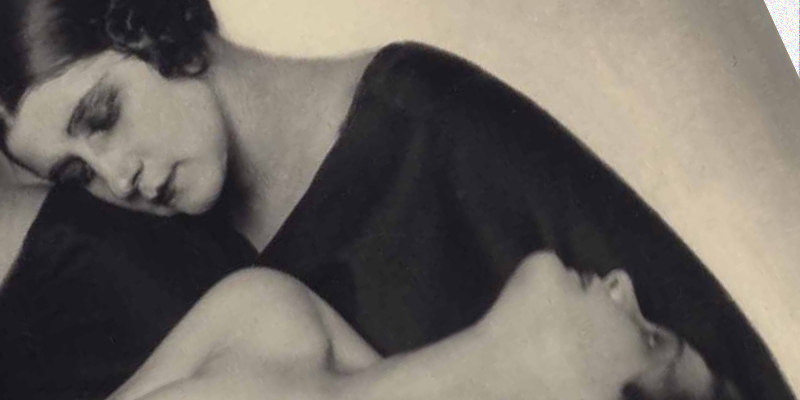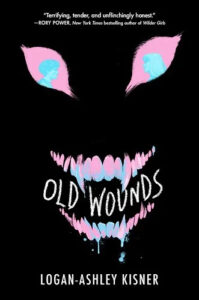Old Wounds is not a ghost story, although I may have described it as such on more than one occasion. You see, ghosts are able to make themselves known, either as nonverbal poltergeists or as tangible spectors. They’re emotional creatures with personalities and histories. Put simply, ghosts have a considerable amount of autonomy.
Hauntings, on the other hand, are voids. Smears of pain and violence against a particular place, which time can seldom touch. A ghost can haunt, sure, but so can memories and emotions and still-living people. Anything can haunt.
The things I’m haunted by are mostly small and dumb in the grand scheme of things. I’m haunted by the clothes I used to wear and the way I used to do my eyebrows. I’m haunted by the terrible stories I used to write in middle school.
I believe I was fourteen years old when Leelah Alcorn started haunting me.
The end of this year marks a decade since Leelah Alcorn’s suicide. Ten years since I read about this girl who walked into traffic after being abused and isolated for her transness. I’m not sure if this was my first proper exposure to trans identity in the public sphere, but it was certainly the first time I’d ever felt that freezing cold wave of despair. Empathy and anger and grief. The hopelessness of only being able to witness the aftermath of a terrible thing.
I felt the same emotions when I familiarized myself with Brandon Teena. Gwen Araujo.
I felt the same emotions when I learned Daniel Aston’s name. Nex Benedict’s.
Across a number of years, with every new name, I found myself faced with the same rationalizations of violence from news outlets, opinion pieces, and casual social media posts. The same blame on the victims. The same justifications for why people had the right to brutalize them.
The same assertions that our genders are inherent, unchangeable, and that violence committed against us is an inevitability.
Horror fiction presents similar assertions, although usually in a way that’s more broadly misogynistic or essentialist. There have been books written about our obsession with dead girls, final girls, and girl-obsessed killers. There’s plenty of fiction where the horror stems from female sexuality, female puberty, and sometimes just the concept of womanhood. Horror loves to utilize gender in its arsenal of weapons. The problem is that horror’s understanding of gender is so extremely outdated.
There have been entire books written about dead girls and final girls and girl-obsessed killers, but these stories remain categorized by rigid male/female binaries. Even within proclaimed feminist horror where ghouls and viruses only target or effect women, trans perspectives are rarely if ever mentioned, forget seriously considered.
What happens when only women are affected by a viral infection? What does it actually mean when men are the only physical bodies capable of being possessed by an evil entity? How does nature logistically define gender and therefore respond to gender variance? There have been more attempts to interrogate these questions in fiction over the last several years (Manhunt comes predominantly to mind), but they are still rare compared to the norm of stories “about gender” which are populated entirely by and considering only cis characters.
You’re familiar with “a monster in the woods” stories. You’re familiar with “a cult wants a female sacrifice” stories. But unless you’re trans and have spent most of your adult life seeking out and consuming all the trans art you can find (*ahem*), then you probably aren’t familiar with trans stories.
The gist of Old Wounds is as follows: a group of men in the northwest corner of Kentucky sacrifice women to a monster that roams the outskirts of their town. This sacrifice occurs twice a year, and has been routine for decades. This is the cycle of violence that Erin and Max unwittingly enter into on their already tumultuous road trip across the United States; this is the cycle that Erin and Max disrupt simply by being trans.
To some extent, every character in this book grapples with gender. Their actions are informed by the belief that their gender either saves them from harm or dooms them to it. The question I wanted to ask with Old Wounds, though, is this: does your gender actually doom you?
The answer to this is paradoxical. It can, insofar as other people can choose to attack you based on their perception of your gender. But people don’t drop dead from being trans, just like women don’t drop dead simply for being women. When people enact transphobic or misogynistic violence, a choice is made.
Many times, misogyny overlaps with transphobia. Transphobia overlaps with misogyny. In writing about one, I inevitably find myself writing about the other. In the end, they’re both tools used to hurt people who are viewed as performing their gender incorrectly.
That’s what made telling Old Wounds interesting to me: Erin and Max. These kids have already spent so much of their lives struggling with their proximity to womanhood, whether that be too close or not close enough. Suddenly, they must work these issues out when femininity has been explicitly made a death tag. And they must try to figure out how much of these assertions are true; how doomed are they?
With all this in mind, why didn’t I make Old Wounds a ghost story? Erin and Max are not the first people to enter into the cycle; there are a lot of dead girls in the unwritten prologue to this story. I could’ve easily thrown a ghost into the mix to literalize some of this traumatic history. A physical body for Erin and Max to interact with, a voice to the girls who came before them.
There was almost a ghost. He managed to survive a couple of early drafts, but, ultimately, this just isn’t a ghost story.
I wanted Old Wounds to be haunted because when I bring my head up from the keyboard, there aren’t ghosts here. Senseless misogynistic and transphobic violence doesn’t result in floating bedsheets. No matter how many trans people we lose to violence, none of them get to come back. We don’t get the closure of knowing they’re at peace. The pointed absence of a ghost in this story is one I hope to be sharper and more upsetting than any tangible presence could’ve been.
Erin and Max are what made Old Wounds worth writing for a multitude of reasons. As someone who truly loves horror, the logistics of placing trans people at the center of a plot this gendered enthralled me. As a spiteful nerd, I wanted to tell this story the way I’ve wanted to see it told for years.
And, as someone who read his first horror novel with a trans protagonist when he was twenty-two years old, I wanted Erin and Max to have life outside of my head. Old Wounds is just one book, but it’s going to be somebody’s first time reading trans characters. I wanted them to be as vibrant, sarcastic, flawed, and brutal as I know my friends to be. I wanted to be honest about what our lives look like, all the joy and pain we feel.
And I wanted to talk about the dead that do not come back as ghosts.
Because Old Wounds is not just concerned with the question of whether Erin and Max can survive their night of horrors. It’s also concerned with all the people who came before them. It’s concerned with providing a voice to those who don’t (or can’t) have one.
Just because there are no ghosts does not mean there’s nothing to be haunted by.
But the haunting has a voice. It speaks through Erin and Max. It speaks through me.
Soon, it will speak through you.
***


















